Key takeaways:
- Choosing the right self-publishing platform is crucial; consider factors like target audience, royalties, and user experience.
- Understanding royalties and pricing can significantly impact earnings; be strategic about pricing while analyzing similar titles in your genre.
- Marketing is essential; building an author platform and leveraging email newsletters can enhance reader engagement and support during a book launch.
- Analyzing sales trends and reader feedback helps refine writing and marketing efforts, creating opportunities for deeper connections with the audience.
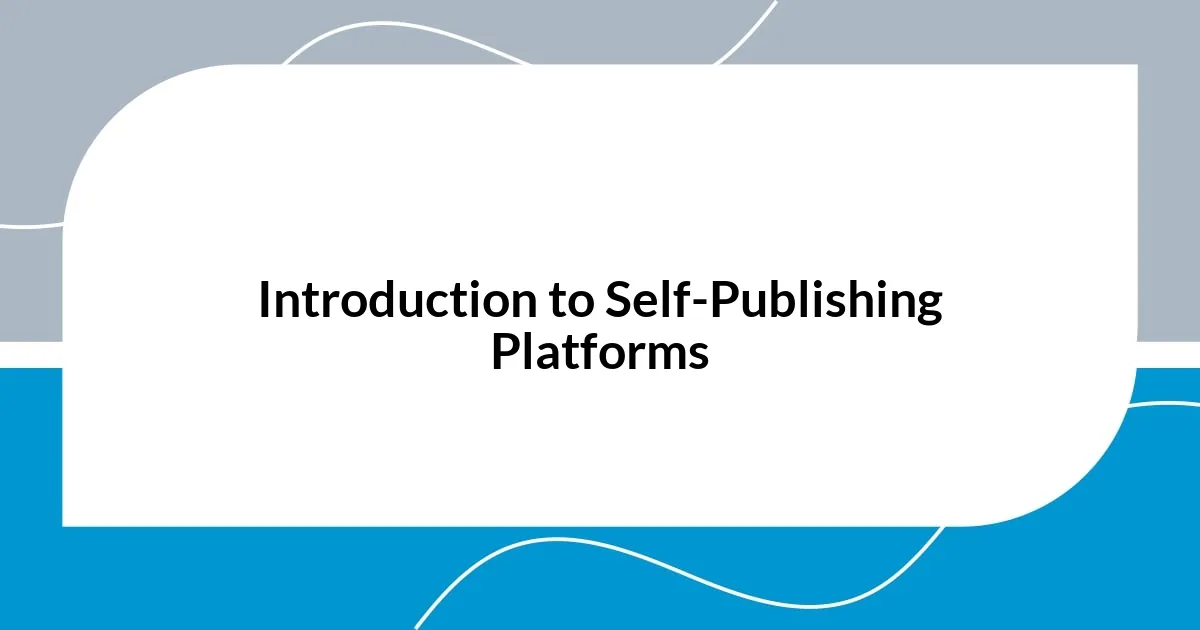
Introduction to Self-Publishing Platforms
Self-publishing platforms have revolutionized the way authors share their work with the world. I remember when I first dipped my toes into this realm; the overwhelming choices made me wonder, “Where do I even start?” The freedom these platforms offer can be exhilarating, but it also presents a unique set of challenges.
As I navigated my self-publishing journey, I discovered that each platform has its own set of features tailored to different needs. For example, Kindle Direct Publishing is often the go-to for e-books, while platforms like IngramSpark cater to print-on-demand services. I can still feel the rush of excitement (and apprehension) as I clicked ‘publish’ for the first time—I had crossed a threshold into a world where my voice was no longer silent.
In the landscape of self-publishing, it’s essential to consider what you want to achieve and how these platforms can support your vision. Are you looking for maximum reach, or do you prefer creative control? From my experience, the right platform can provide not just a publishing avenue, but a community that nurtures your growth as a writer.
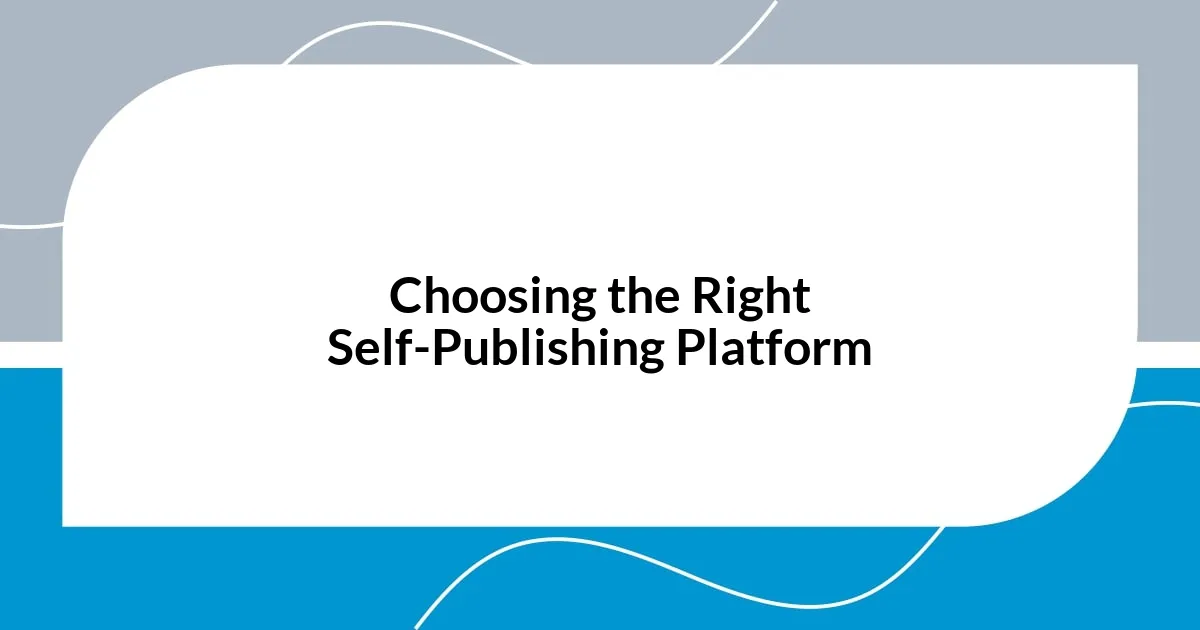
Choosing the Right Self-Publishing Platform
Choosing the right self-publishing platform can feel like navigating a maze. I vividly recall spending hours comparing features, costs, and royalties, bouncing from one website to the next, hoping something would stand out. Ultimately, I realized that the choice largely depends on what I valued most. Was it ease of use, distribution options, or marketing support? Those priorities shaped my journey.
Here are some key factors to consider when selecting a platform:
- Target Audience: Identify where your readers are most likely to find your work. Some platforms cater more to specific genres or audiences.
- Formats Offered: Decide if you want to publish e-books, print books, or both. Each platform specializes in different formats.
- Royalties: Evaluate the royalty structures. Some platforms offer higher percentages than others.
- Global Distribution: If reaching an international audience is important, look for platforms with wide distribution networks.
- User Experience: Consider whether the platform is user-friendly. A complex setup can be frustrating, especially for first-time publishers.
- Support and Community: Check if the platform offers resources, forums, or access to a community of writers. This support can be invaluable as you navigate the self-publishing journey.
Reflecting on my experience, the right platform helped me not just to publish, but also to connect with other writers who inspired me. Embracing that community made all the difference—it turned a solitary task into an enriching shared experience.
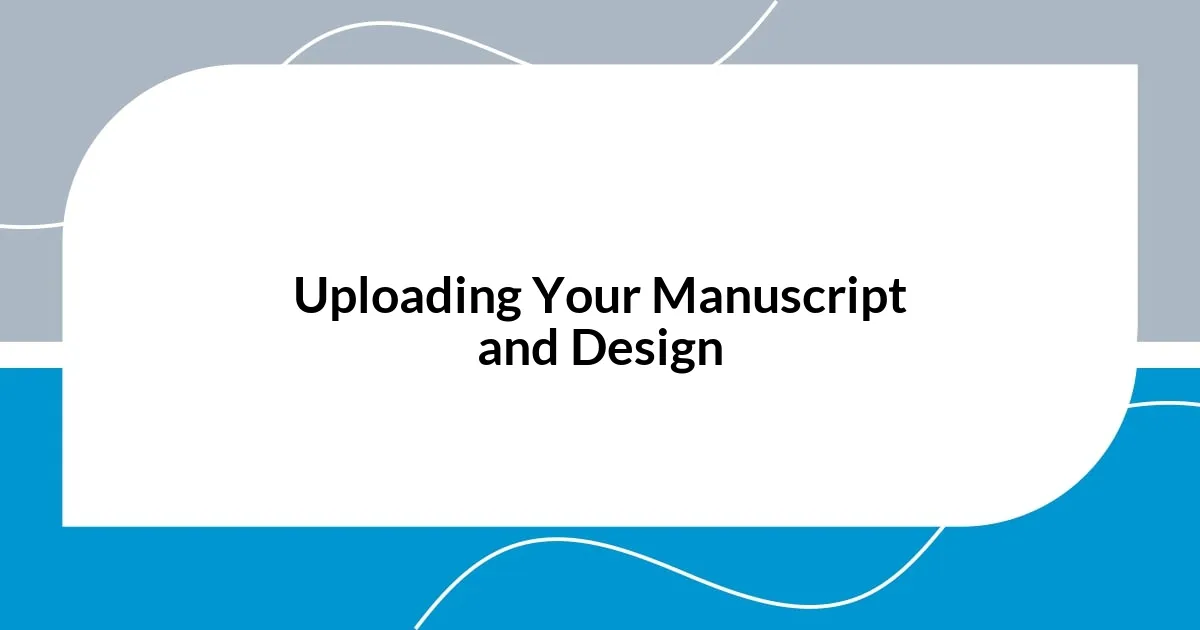
Uploading Your Manuscript and Design
I still remember the anxiety I felt when it came time to upload my manuscript. Each platform has its own set of guidelines, and I found myself second-guessing everything. Was my formatting correct? Did I include all the necessary metadata? I’ve learned now that taking the time to thoroughly review the submission guidelines can save you from headaches later on. Trust me, there’s nothing worse than realizing you uploaded the wrong file after hitting that ‘submit’ button!
Once you’ve tackled the nitty-gritty of manuscript uploading, the design component comes into play, and that’s where the fun really begins. I can recall poring over cover design choices—should I use stock images or hire a designer? A compelling cover and professional layout attract readers, and seeing my final design come together is one of the most satisfying parts of the process. Remember, your book cover is the first impression, and it should reflect the essence of your story beautifully.
Here’s a little comparison table that outlines key features to consider when uploading your manuscript and design across various platforms. This will help make your decision process a bit clearer:
| Platform | Ease of Upload |
|---|---|
| Kindle Direct Publishing | User-friendly interface with step-by-step guidance |
| IngramSpark | Requires adherence to strict formatting guidelines |
| Smashwords | Offers a comprehensive style guide for formatting |
| Draft2Digital | Simple drag-and-drop features for uploading manuscripts |
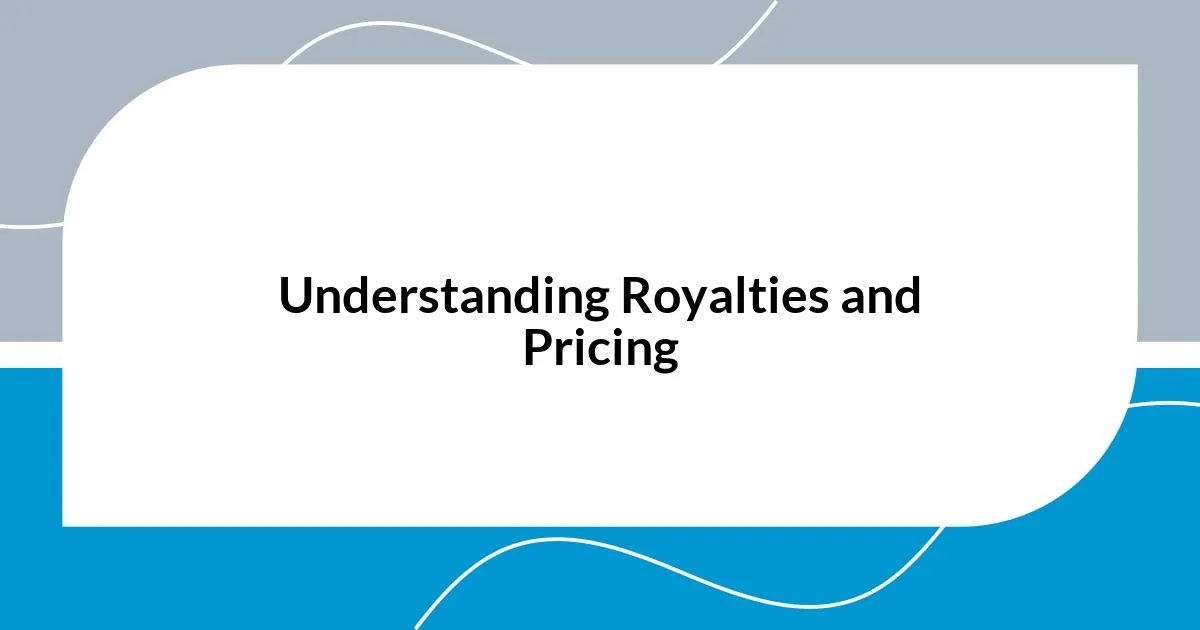
Understanding Royalties and Pricing
Understanding the intricacies of royalties and pricing has been one of the most enlightening parts of my self-publishing journey. I remember the moment I discovered how royalties can vary significantly among platforms. Some offer up to 70% royalties on e-books, while others are closer to 35%. That’s a substantial difference that can impact your earnings drastically. It really made me question: how much am I willing to invest in a platform versus what I stand to gain?
Setting the right price for your work is another puzzle. Initially, I wrestled with the idea of pricing my book competitively versus valuing my effort. In my case, I opted for a mid-range price, which seemed to attract readers while still reflecting the work I put into it. I found it helpful to analyze similar titles in my genre to gauge appropriate pricing. Have you ever set a price only to wonder if it was too high or too low? It’s a balancing act, indeed!
When analyzing royalties, keep in mind that some platforms have different rates based on price tiers. I realized that if I priced my e-book above a certain threshold, I’d lose a chunk of potential royalties. This was a wake-up call for me as a writer—I learned that every decision, from pricing to platform selection, directly affects my bottom line. It’s the kind of knowledge that not only empowers you but also urges you to be strategic with your creativity.
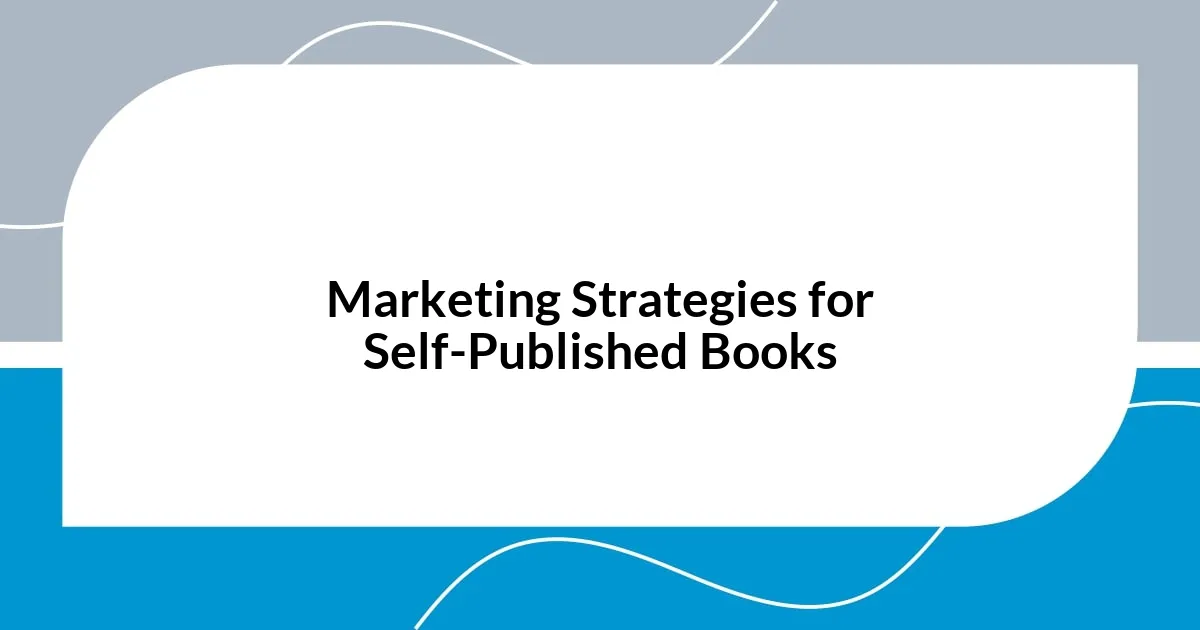
Marketing Strategies for Self-Published Books
Marketing your self-published book is as pivotal as writing it. I still vividly remember my first attempt at promoting my novel; I felt like a fish out of water. I found that building an author platform—through social media and a personal website—was essential. Engaging consistently with potential readers helped me cultivate a community around my work. Have you ever felt overwhelmed by where to start? It took me time to realize that even small, dedicated efforts can yield significant connections.
I also learned that leveraging email newsletters was a game-changer for reaching my audience. Initially, I was hesitant to ask for subscribers, fearing rejection. But once I began regularly sharing updates and exclusive content with my list, I saw engagement soar. When readers feel like they’re part of your journey, they’re more likely to support you on launch day. Have you tried connecting with your audience this way? I can’t stress enough how powerful it is to create a sense of belonging among your readers.
Don’t overlook the value of book reviews, either. After my book launched, I reached out to early readers and bloggers for honest feedback. The excitement bubbled up when I got my first review—it felt like validation for all the hard work! Relying on platforms like Goodreads and Amazon to gather reviews became a key strategy. Have you ever considered how social proof can influence a new reader’s decision to pick up your book? It’s fascinating how a few positive words can transform your book’s visibility and sales potential.
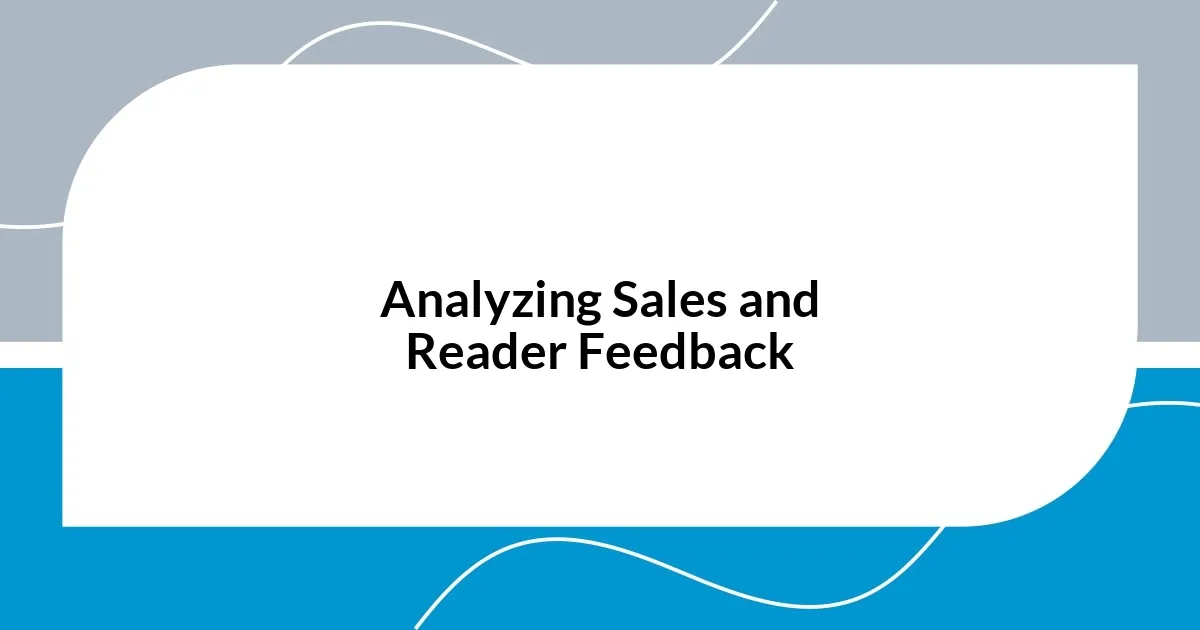
Analyzing Sales and Reader Feedback
Analyzing sales and reader feedback has been an eye-opening experience for me as a self-published author. I fondly remember the first time I checked my sales figures after launching my book; the rush of excitement mixed with a tinge of anxiety was palpable. Tracking trends in sales helped me understand what resonated with my audience. Have you ever felt a surge of hope watching those numbers climb, wondering what was driving the interest? For me, it was a combination of timing, marketing efforts, and engaging content that sparked those initial sales.
Reader feedback also played a crucial role in shaping my journey. The first time I received a heartfelt email from a reader sharing how my story impacted their life, I felt a profound sense of purpose. This direct connection underscored the importance of reviews—they’re not just numbers; they reflect genuine reader experiences. I found that responding graciously to feedback—both positive and negative—helped foster deeper relationships with my audience. Have you thought about how each review is an opportunity to connect and improve? I certainly did, and this mindset has driven me to refine my craft continuously.
Moreover, tracking the correlation between sales spikes and reader feedback was revealing. I discovered that my book’s sales would often surge following engaging discussions in reader communities or book clubs. It’s almost like a ripple effect—one enthusiastic review can create a buzz that leads to a flurry of purchases. Isn’t it intriguing how our words can inspire others, ultimately reflecting in sales? Embracing this feedback loop not only validates my efforts but also informs my future projects, fostering a more meaningful dialogue with my readers.